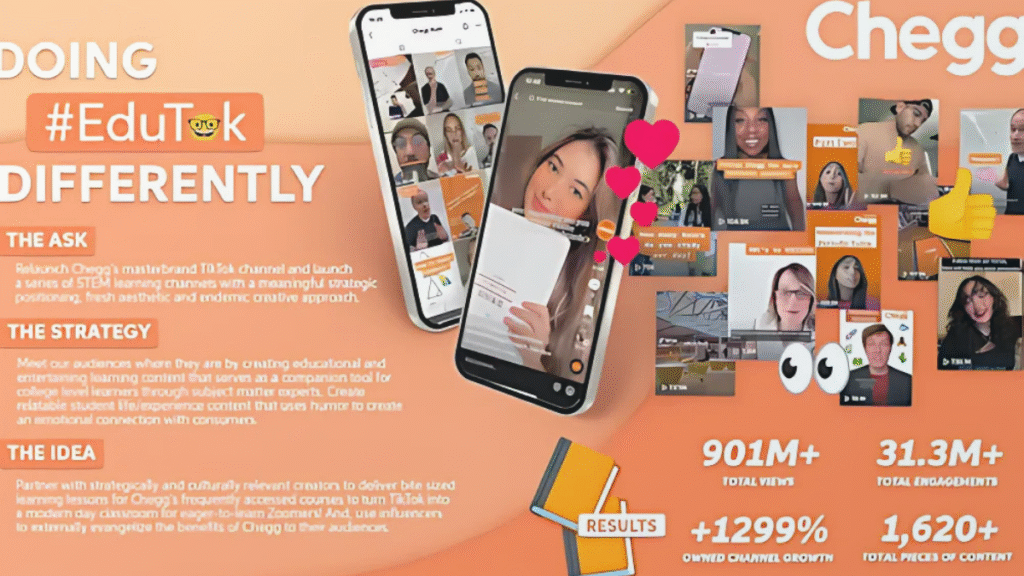The counterintuitive strategy that generated 475 million views by solving what everyone else ignored
TikTok’s #EduTok was broken. Students scrolled through endless “5 secrets professors hate!” videos that delivered zero actual learning. While every educational brand chased shallow engagement, Chegg saw opportunity in the frustration.
Their radical move? Actually teach something.
The result: 475 million views, 3.5 million engaged students, and 471% growth by turning the platform’s biggest weakness into their competitive advantage.
The Gap Everyone Missed
While competitors optimized for clicks with surface-level content, students were desperately searching for real help with their coursework. The gap was massive—and growing.
Chegg didn’t see TikTok’s shallow educational content as a platform limitation. They saw it as their opening.
The Strategy: Embrace Both, Master Both
Instead of choosing between entertainment OR education, Chegg decided to excel at both:
Real Expertise + Cultural Fluency
- Partnered with actual subject matter experts (not just influencers)
- Created 300+ genuine college-level lessons
- Collaborated with college-aged creators who spoke student language
- Delivered depth in bite-sized, platform-native formats
Your Turn: Find Your Gap
This strategy works beyond education. Here’s how to apply it:
For Fitness Brands: While others post generic “30-day challenges,” what if you created content addressing specific workout fears? “How to use gym equipment without looking lost” or “What to do when you’re the only beginner in a CrossFit class.”
For Financial Services: Instead of basic budgeting tips, tackle real anxieties: “How to negotiate salary when you hate confrontation” or “What to actually say when debt collectors call.”
For B2B SaaS: Skip the feature demos. Address real workflow problems: “How to get your team to actually use the new software” or “What to do when your boss wants ROI data you don’t have.”
For Beauty Brands: Move beyond tutorials to confidence issues: “How to do makeup when you’re running late and stressed” or “Skincare for people who forget routines.”
The Three-Step Playbook
1. Identify the Frustration Gap What are people complaining about in your industry that no one’s actually solving? Chegg found students frustrated with clickbait education.
2. Build Systematic Solutions Don’t just create one viral video. Build a content system that consistently delivers real value. Chegg created 300+ pieces of substantial content.
3. Speak the Platform’s Language Master the format first, then adapt your expertise to fit. Chegg learned TikTok’s native style, then filled it with genuine education.
The Bigger Opportunity
Every platform has gaps where user needs aren’t being met. Most brands see limitations. Smart brands see competitive moats.
Reddit: Long-form discussions lack visual explanation LinkedIn: Professional advice is often generic and unhelpful
Instagram: Lifestyle content rarely addresses real struggles YouTube: Tutorials often skip the “what if it goes wrong” scenarios
Your Next Move
The question isn’t whether your industry has gaps—it’s whether you’re brave enough to fill them systematically while everyone else optimizes for easy wins.
Chegg proved that the best way to win social media isn’t racing to the bottom with everyone else. It’s identifying what’s missing and providing it better than anyone else dares.
What gap is everyone in your industry ignoring that you could own?
The brands that win will be the ones that actually help their audiences succeed, not just entertain them.
